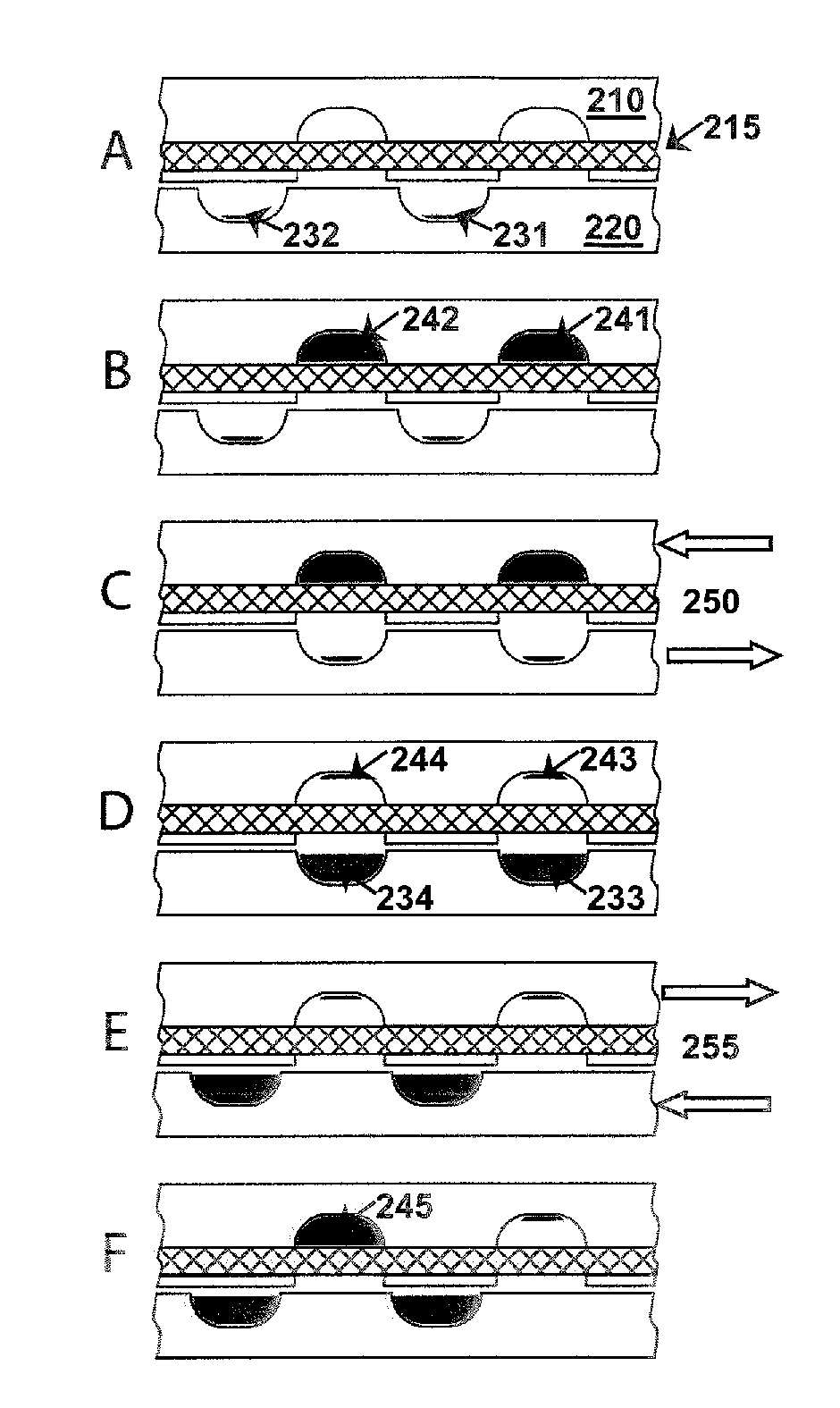Fluidic devices and systems for sample preparation or autonomous analysis
a technology of fluidic devices and systems, applied in the field of fluidic devices, can solve problems such as difficulty in analyzing samples, limited sensitivity, and difficulty in quantifying
- Summary
- Abstract
- Description
- Claims
- Application Information
AI Technical Summary
Benefits of technology
Problems solved by technology
Method used
Image
Examples
example 1
Device for Biospecimen Preservation
[0309]In FIG. 6, we show a preliminary result of an RNA sample mixed with a stabilization matrix RNAstable® produced by Biomatrica, Inc. (San Diego, Calif.) in a bridge device. The RNA sample was injected into two SlipChip devices, the layers of the SlipChips were slipped, and then the samples were recovered without substantial loss. As a control, an RNA sample was stored at −80° C. for one night. Experiments were conducted in two devices, where each was injected with the RNA sample and then dried. After drying, the SlipChip devices were stored at 65° C. for one night. Samples were rehydrated by injecting deionized water and recollected from the device.
[0310]As shown in FIG. 6, the electrophoresis gel shows that RNA was not degraded during these experiments. Due to leakage, the quantity of sample loaded in lane 3 was lower than the quantity loaded into the other lanes. No degradation was observed in any of the samples, as indicated by a single shar...
example 2
Exemplary Device for Nucleic Acid Extraction
[0311]We directly connected a modified filter from QiaAMP MinElute (Qiagen) to a simplified version of SlipChip for nucleic acid extraction. An array of solutions, containing (in order) 675 lysed sample, 500 pit wash buffer AW1*, 500 μL wash buffer AW2*, and 500 μL 100% ethanol was then pushed through the filter by pressurization and through waste outlet of the SlipChip with layers arranged in an initial loading position (FIG. 16). The total time elapsed during this step was less than 3 minutes. The chip was then slipped to a second position for filter drying, which took about 2 minutes, and to a third position for elution, which took less than 1 minute. The sample was then collected from a reservoir. In sum, the total time to perform a nucleic acid extraction on a SlipChip can be as low as 6 minutes. The air drying step can be eliminated if extraction protocol does not require drying. Such protocol includes, but is not limited to Life Tec...
example 3
Second Generation Device for Nucleic Acid Extraction
[0312]The nucleic acid purification SlipChip (NA-SlipChip) contained a modified ChargeSwitch® membrane, which can bind nucleic acids at a low pH and release nucleic acids at a high pH. Sample solution, washing buffer, and elution buffers were pushed sequentially from the chambers on the top layer through the membrane into the receiving wells in the bottom layer. This is achieved by pressurizing the top layer and rotating the bottom grip disc, which is internally connected with the membrane layer. We tested the ChargeSwitch® membrane because it works with a variety of sample types, and it does not require ethanol or other organic solvents, which may compromise downstream applications such as PCR.
[0313]The second generation device (FIG. 19) was capable of performing the nucleic acid purification protocol with the ChargeSwitch® membrane. Further modification can include integration of the second-generation device with pressurization, ...
PUM
| Property | Measurement | Unit |
|---|---|---|
| height | aaaaa | aaaaa |
| volume | aaaaa | aaaaa |
| volumes | aaaaa | aaaaa |
Abstract
Description
Claims
Application Information
 Login to View More
Login to View More - R&D
- Intellectual Property
- Life Sciences
- Materials
- Tech Scout
- Unparalleled Data Quality
- Higher Quality Content
- 60% Fewer Hallucinations
Browse by: Latest US Patents, China's latest patents, Technical Efficacy Thesaurus, Application Domain, Technology Topic, Popular Technical Reports.
© 2025 PatSnap. All rights reserved.Legal|Privacy policy|Modern Slavery Act Transparency Statement|Sitemap|About US| Contact US: help@patsnap.com



